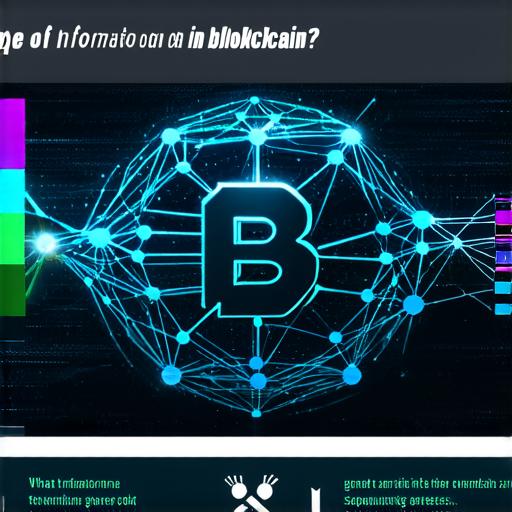What is Blockchain? A Brief Overview
Blockchain is a decentralized digital ledger that records transactions across multiple computers in a network. It was first introduced with the creation of Bitcoin, but its potential applications go far beyond cryptocurrency.
The key features of blockchain include:
- Decentralization: There is no central authority controlling the network or managing the data.
- Immutability: Data on a blockchain cannot be changed or deleted once it has been recorded.
- Transparency: All participants in the network have access to the same data and can verify its authenticity.
- Security: Each transaction is encrypted and verified by multiple participants, making it resistant to hacking and fraud.
What Type of Information Can be Stored on a Blockchain?
Blockchain technology offers numerous potential applications for storing various types of information. Here are some examples:
- Cryptocurrencies: Bitcoin is the most well-known example, but there are many other cryptocurrencies that use blockchain technology to manage transactions.
- Supply chain management: Blockchain can be used to track products from production to delivery, ensuring transparency and accountability throughout the process.
- Identity verification: Blockchain can be used to create a secure and decentralized system for verifying identity, reducing fraud and improving security.
- Voting systems: Blockchain can be used to create a transparent and secure voting system that is resistant to hacking and tampering.
- Healthcare records: Blockchain can be used to store healthcare records in a secure and decentralized manner, ensuring patient privacy and reducing administrative costs.
How Does Blockchain Work? A Detailed Explanation
Blockchain technology works through a process called mining. Mining involves solving complex mathematical problems that validate transactions and add them to the blockchain. Once a transaction is validated, it is added to a block, which contains a record of all the transactions. The block is then verified by multiple participants in the network before it is added to the chain.
The process of mining requires significant computational power, which is why it is often carried out by specialized computers called miners. Miners are rewarded for their work with a small amount of cryptocurrency, which incentivizes them to continue validating transactions and adding new blocks to the chain.
Advantages and Disadvantages of Storing Information on a Blockchain
Storing information on a blockchain has several advantages, including:
- Decentralization: The lack of a central authority ensures that data is not controlled by any single entity, reducing the risk of manipulation or censorship.
- Immutability: Data on a blockchain cannot be changed or deleted once it has been recorded, ensuring that it remains tamper-proof and secure.
- Transparency: All participants in the network have access to the same data, allowing for improved transparency and accountability.
- Security: The use of encryption and verification protocols makes it difficult for hackers to compromise the blockchain and steal or manipulate data.
However, there are also some challenges associated with storing information on a blockchain, such as:
Real-Life Examples of Blockchain Technology in Action
Despite the challenges associated with blockchain, there are many real-life examples of companies and organizations successfully using this technology to improve transparency, security, and efficiency in their operations. Here are a few:

- IBM’s Food Trust: IBM’s Food Trust is a blockchain-based system that allows food manufacturers, retailers, and logistics providers to track products from production to delivery. The system has been used to improve supply chain transparency and reduce food waste by providing real-time visibility into the location and status of food products.
- Provenance: Provenance is a blockchain-based platform that allows companies to track the origin and movement of goods throughout their supply chain. The platform has been used by companies in the fashion, food, and pharmaceutical industries to improve traceability and reduce fraud by providing a secure and tamper-proof record of product information.
- MediLedger: MediLedger is a blockchain-based system that allows pharmaceutical manufacturers and distributors to track drugs throughout the supply chain. The system has been used to reduce counterfeiting and improve patient safety by providing real-time visibility into the location and status of drugs.
- Walmart’s Supply Chain Traceability: Walmart has implemented a blockchain-based system for tracing the origin and movement of food products in its supply chain. The system has been used to improve transparency and reduce food waste by providing real-time visibility into the location and status of food products.
Summary
In conclusion, blockchain technology provides a decentralized and secure solution for storing various types of information. Its potential applications are numerous and varied, from cryptocurrencies to supply chain management and healthcare records. While there are some challenges associated with adopting blockchain technology, its advantages in terms of transparency, security, and efficiency make it an attractive option for businesses looking to improve their operations. As the technology continues to evolve and become more mainstream, we can expect to see even more innovative uses for blockchain in the years to come.
